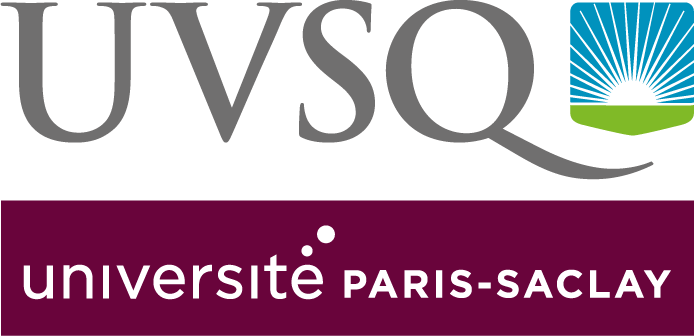Vous êtes ici : UVSQ RechercheHabilitation à diriger des recherches
- Partager cette page :
- Version PDF
« Réponse bronchique à l’étirement cyclique : modèle d’organe isolé animal ou humain appliqué à la transplantation pulmonaire » par Morgan LE GUEN
Discipline : Anesthésiologie et Réanimation chirurgicale ; médecine d'Urgence
Résumé :
Au sein du poumon, l'arbre bronchique constitue un compartiment qui comme le diaphragme ou le parenchyme joue un rôle important dans la respiration et l'adaptation du patient à son environnement. La bronche reste toutefois un organe peu étudié et c'est l'objet de ce travail qui vise une passerelle entre phase expérimentale sur organe isolé et évaluation clinique du patient opéré. Ainsi, des travaux ont montré que l'application d'une contrainte physique unique calibrée ou encore répétée sur la bronche modifiait le tonus de base et la broncho-réactivité. L'épithélium bronchique représente le principal effecteur de cette modification via la voie des NO-synthases. Cette réponse est également affectée par l'exposition à des agents anesthésiques notamment en cas d'ischémie-reperfusion. L'association des deux stimuli se retrouve dans le contexte spécifique de la transplantation pulmonaire qui représente la perspective de ce modèle. Des études de la dysfonction endothéliale et de la broncho-réactivité tant sur un modèle ex-vivo qu'en clinique humaine permettront d'avancer dans la connaissance et les perspectives thérapeutiques pour préserver ou moduler la réponse bronchique.
Abstract:
Within the lung, the bronchial tree constitutes a compartment which, like the diaphragm or the parenchyma, plays an important role in the breathing and int the adaptation of the patient to his environment. The bronchus remains an organ little studied and it is the object of this work that aims a gateway between experimental phase on isolated organ and clinical evaluation of the operated patient. Thus, the application of a single or repeated physical strain on the bronchus modifies the basal tone and the bronchial responsiveness. The epithelium represents the main effector of this modification via the NO-synthase pathway. This response is also affected by exposure to anesthetic agents, particularly in cases of ischemia-reperfusion. The association of the two stimuli is found in the specific context of pulmonary transplantation which represents the perspective of this model. Studies of endothelial dysfunction and broncho-reactivity in both an ex-vivo and a human clinical model will advance knowledge and therapeutic perspectives to preserve or modulate the bronchial response.
Au sein du poumon, l'arbre bronchique constitue un compartiment qui comme le diaphragme ou le parenchyme joue un rôle important dans la respiration et l'adaptation du patient à son environnement. La bronche reste toutefois un organe peu étudié et c'est l'objet de ce travail qui vise une passerelle entre phase expérimentale sur organe isolé et évaluation clinique du patient opéré. Ainsi, des travaux ont montré que l'application d'une contrainte physique unique calibrée ou encore répétée sur la bronche modifiait le tonus de base et la broncho-réactivité. L'épithélium bronchique représente le principal effecteur de cette modification via la voie des NO-synthases. Cette réponse est également affectée par l'exposition à des agents anesthésiques notamment en cas d'ischémie-reperfusion. L'association des deux stimuli se retrouve dans le contexte spécifique de la transplantation pulmonaire qui représente la perspective de ce modèle. Des études de la dysfonction endothéliale et de la broncho-réactivité tant sur un modèle ex-vivo qu'en clinique humaine permettront d'avancer dans la connaissance et les perspectives thérapeutiques pour préserver ou moduler la réponse bronchique.
Abstract:
Within the lung, the bronchial tree constitutes a compartment which, like the diaphragm or the parenchyma, plays an important role in the breathing and int the adaptation of the patient to his environment. The bronchus remains an organ little studied and it is the object of this work that aims a gateway between experimental phase on isolated organ and clinical evaluation of the operated patient. Thus, the application of a single or repeated physical strain on the bronchus modifies the basal tone and the bronchial responsiveness. The epithelium represents the main effector of this modification via the NO-synthase pathway. This response is also affected by exposure to anesthetic agents, particularly in cases of ischemia-reperfusion. The association of the two stimuli is found in the specific context of pulmonary transplantation which represents the perspective of this model. Studies of endothelial dysfunction and broncho-reactivity in both an ex-vivo and a human clinical model will advance knowledge and therapeutic perspectives to preserve or modulate the bronchial response.
Informations complémentaires
Dominique FLETCHER, Professeur des Universités?Praticien Hospitalier, Université de Versailles Saint-Quentin-en-Yvelines - Rapporteur
Benoît PLAUD, Professeur des Universités?Praticien Hospitalier, Université Paris Diderot - Rapporteur
Frédéric LOFASO, Professeur des Universités?Praticien Hospitalier, Université de Versailles Saint-Quentin-en-Yvelines - Examinateur
Marc-Joseph LICKER, Professeur ordinaire, Hôpitaux Universitaires Genève – Examinateur
Stanislas GRASSIN-DELYLE, Professeur des Universités - Praticien Hospitalier, Université de Versailles Saint-Quentin-en-Yvelines – Examinateur
Julien POTTECHER, Professeur des Universités - Praticien Hospitalier, Université de Strasbourg – Examinateur
Benoît PLAUD, Professeur des Universités?Praticien Hospitalier, Université Paris Diderot - Rapporteur
Frédéric LOFASO, Professeur des Universités?Praticien Hospitalier, Université de Versailles Saint-Quentin-en-Yvelines - Examinateur
Marc-Joseph LICKER, Professeur ordinaire, Hôpitaux Universitaires Genève – Examinateur
Stanislas GRASSIN-DELYLE, Professeur des Universités - Praticien Hospitalier, Université de Versailles Saint-Quentin-en-Yvelines – Examinateur
Julien POTTECHER, Professeur des Universités - Praticien Hospitalier, Université de Strasbourg – Examinateur
Contact :
DSR - Service FED : theses@uvsq.fr
Documents à télécharger
- avis-d-affichage-hdr (6).pdf PDF, 143 Ko










 Etudiants
Etudiants